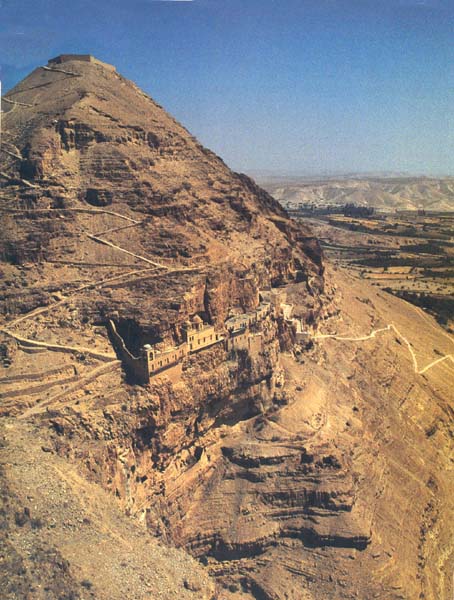Image Details

Zev Radovan
Ketef Jericho may have played an important role in the story of Rahab, who protected Israelite spies sent by Joshua to scout the region of Jericho (Joshua 2). In the caves above Jericho, the spies may have hidden themselves until they “came down from the hills” and made their getaway to report to Joshua on the other side of the Jordan River (Joshua 2:22–23).
In the fourth century A.D., Christian monks secluded themselves in the caves that riddle these cliffs. By 340 A.D. they had built a monastery here. In the fifth century, the monastery went into decline, and it was completely abandoned in the eighth century. The Greek Orthodox Church, between 1874 and 1895, rebuilt the present monastery on top of the ancient remains.
Recent exploration of the Ketef Jericho caves led to the author’s excavation of a cave, across the canyon from the monastery, where he uncovered one of the oldest papyrus fragments ever found in the Holy Land.
